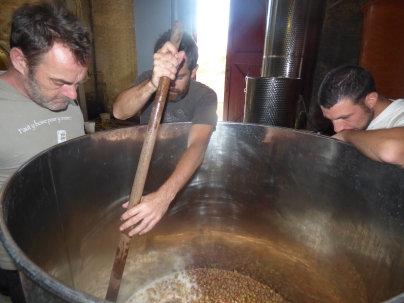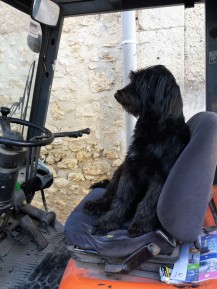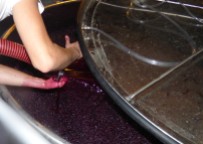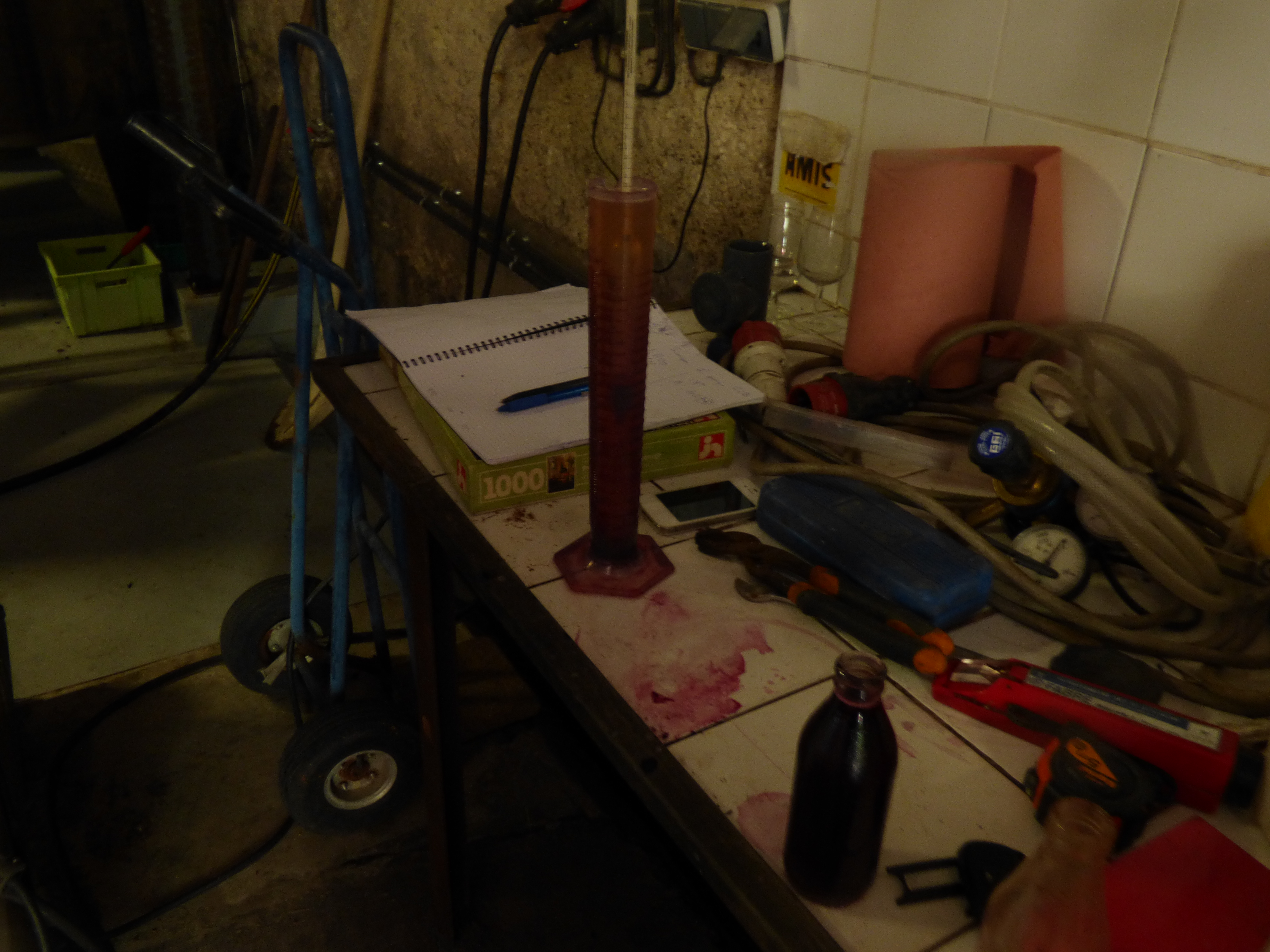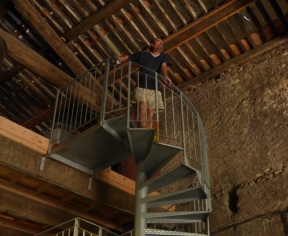
Finally. Maybe a few weeks too late but we had around ten hours of rain on Tuesday to relieve the parched Languedoc. That said, it soon dried out again and much more rain will be needed for the well being of the region. However, for the vines it was a welcome relief and should revive some parched vines.
Jeff Coutelou told me that in Peilhan vineyard for example the grapes were pretty much skins and pulp, now there is some juice to balance them. We have had some lovely fruit through the vendanges but it is very concentrated and lacking juice. Whilst for Jeff’s bank balance the rain would have been more welcome a month ago to fill out all the grapes and provide more wine, this was better than nothing. I saw one southern Rhone producer say it was like 100€ notes falling from the sky. That may be true for Chateauneuf du Pape but not for Jeff who said maybe a few centimes coins would be nearer the mark.
Cinsault in the rain, some of these were picked Wednesday
Grenache being put whole bunch into tank
The day before the rain, Monday 9th (Day 8 of vendanges) was a picking of Grenache from Sainte Suzanne. It was put into tank in whole bunches to give a more fruit driven wine, a semi carbonic maceration.
Anthony collecting cases, star over the stable
No picking on the Tuesday or Wednesday morning , the photos show why with water standing on the grapes. Wednesday afternoon (Day 9) saw more Grenache and the first Cinsault of the year. This was destemmed as usual.
Cinsault (left) and Grenache
Meanwhile the break gave Jeff the opportunity to do more work on the wines in tank which have all begun their fermentations, the whites took a little longer in their temperature cooled tanks but have started too: Remontage, pouring or pumping wine over the top of the crust of grape skins and pulp; Batonnage, stirring the white wines in tank; Pigeage, pushing down the cap or crust into the wine for the same reason as remontage.
Meanwhile the figures on specific gravity for the wines continue to decline, indicating the fermentation process is going ahead successfully.
To give you some idea of how hard that crust can be and how much effort it takes to punch it down have a look at the video of Jeff treading on the cap of the Syrah from La Garrigue.




























